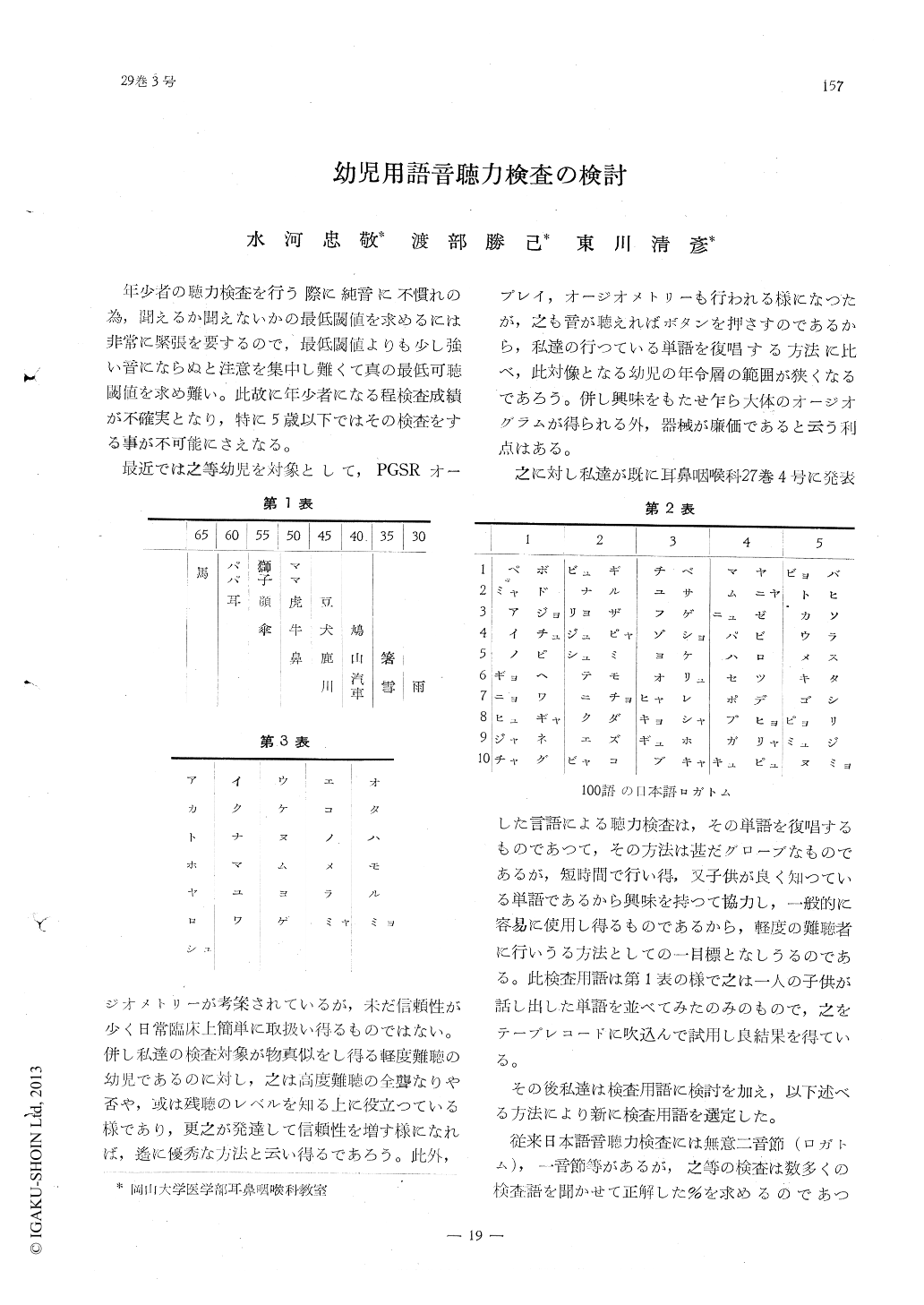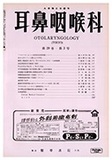- 有料閲覧
- 文献概要
- 1ページ目
年少者の聴力検査を行う際に純音に不慣れの為,聞えるか聞えないかの最低閾値を求めるには非常に緊張を要するので,最低閾値よりも少し強い音にならぬと注意を集中し難くて真の最低可聴閾値を求め難い。此故に年少者になる程検査成績が不確実となり,特に5歳以下ではその検査をする事が不可能にさえなる。
最近では之等幼児を対象として,PGSRオージオメトリーが考案されているが,未だ信頼性が少く日常臨床上簡単に取扱い得るものではない。併し私達の検査対象が物真似をし得る軽度難聴の幼児であるのに対し,之は高度難聴の全聾なりや否や,或は残聴のレベルを知る上に役立つている様であり,更之が発達して信頼性を増す様になれば,遙に優秀な方法と云い得るであろう。此外,プレイ,オージオメトリーも行われる様になつたが,之も音が聴えればボタンを押さすのであるから,私達の行っている単語を復唱する方法に比べ,此対像となる幼児の年令層の範囲が狭くなるであろう。併し興味をもたせ乍ら大体のオージオグラムが得られる外,器械が廉価であると云う利点はある。
Mizukawa and associates make selection of 30 simple words for use in conducting heari-ng tests among youngsters in the age-group of second-graders in the Primary School or younger. The usual method of application of audiometry in this age-group is confronted with difficulty and the results obtained by such a method may not be altogether relia-ble. Furthermore, the testing of these chil-dren are conducted in a separate room in which the examiner is seated, connected only by means of an indirect mirror affording a full view of the patient to the examiner. The element of psychological disturbances that may be evoked in the examinee by a presence of a stranger may thus, be avoided.

Copyright © 1957, Igaku-Shoin Ltd. All rights reserved.


